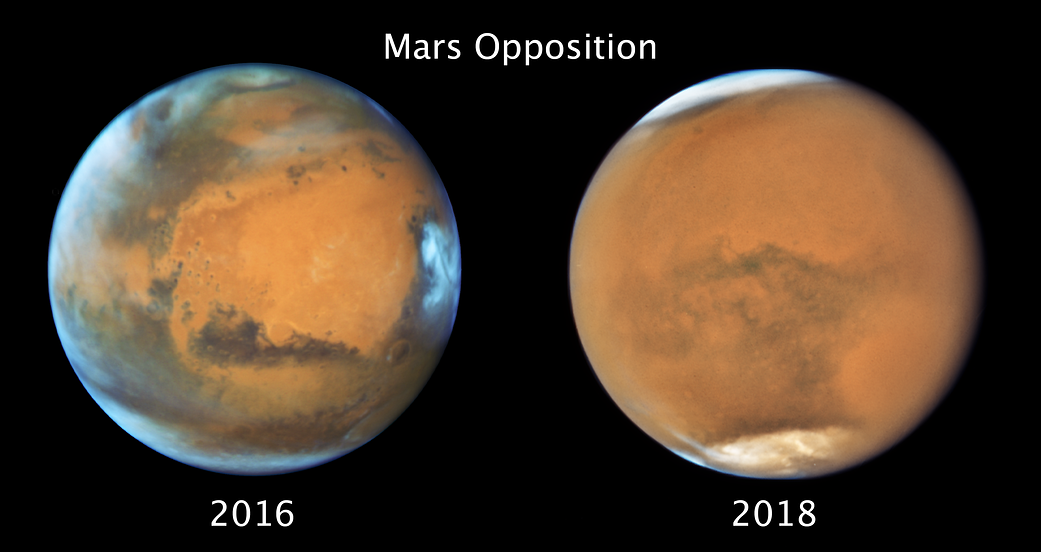These side-by-side images of Mars, taken roughly two years apart, show very different views of the same hemisphere of Mars. Both were captured when Mars was near opposition, which occurs about every two years, when Earth’s orbit catches up to Mars’ orbit. At that time, the Sun, Earth and Mars fall in a straight line, with Mars and the Sun on “opposing” sides of Earth.
The image on the left, taken on May 12, 2016, shows a clear atmosphere. The picture on the right, taken on July 18, 2018, features a global dust storm, with spring in the southern hemisphere.
Scientists believe that heat from the southern hemisphere’s spring and summer triggers dust storms that originate in the Hellas Basin, the lowest point on the planet.
Although the Red Planet is showing virtually the same face to us, classical dark features first mapped by early sky watchers look different in each image. This is partly because of obscuration from the 2018 global dust storm, but also because the northern hemisphere was tilted toward Earth in 2016, and away from Earth in 2018. The latter view reveals more of the southern hemisphere, including the cloud-enshrouded south polar region.
The phenomenon of opposition is a result of the difference in orbital periods between Earth’s orbit and Mars’ orbit. While Earth takes the familiar 365 days to travel once around the Sun, Mars takes 687 Earth days to make its trip around our star. As a result, Earth makes almost two full orbits in the time it takes Mars to make just one, resulting in the occurrence of Martian oppositions about every 26 months.
Credits: NASA, ESA, and STScI


























